Bio-Inspired AI: When Generative AI and Biomimicry Overlap 🧬
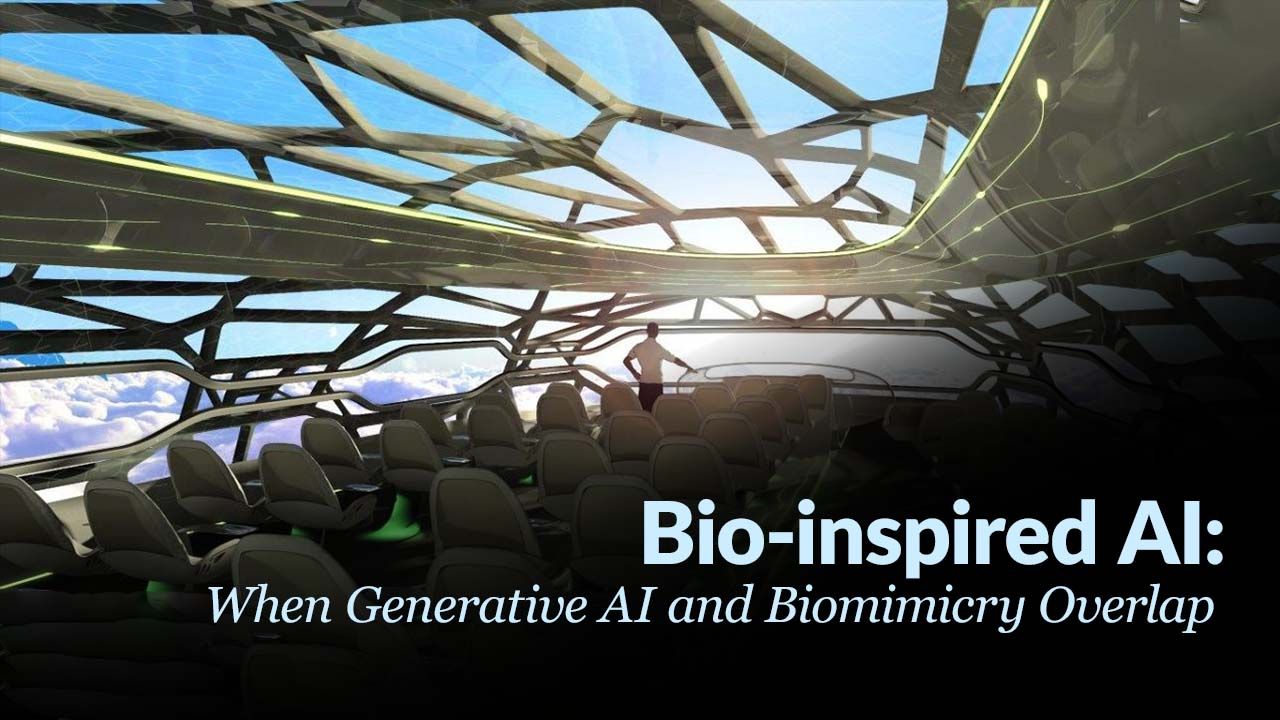
We love tools like ChatGPT, but perhaps not for the reasons you think.
Today we dive deeper into the world of Bio-inspired AI. Generative Artificial Intelligence (Generative AI) and biomimicry, and how in combination with the right humans might bring about a new Cambrian explosion of nature-inspired innovations.
But, before we get ahead of ourselves – what is Generative Artificial Intelligence? It is a branch of Machine Learning, and is typically a statistical model that is capable of generating text, images, or other media in response to prompts. These models learn the patterns and structure of their input training data, then generate new data with similar characteristics (thanks, Wikipedia). Until recently, AI lived within the realm of statisticians and engineers, but thanks to publicly accessible tools like ChatGPT and MidJourney, this deeply powerful technology has spread like wildfire through global industries, applications and conversations.
Let’s begin with curiosity and a question…
How might Bio-inspired and Generative AI enhance our biomimicry endeavours?
With well-intentioned biomimics, Generative AI will dramatically expand nature-inspired innovations and scientific breakthroughs. Generative AI can assist biomimics as research assistants, thought partners, and lead designers. The greatest potential: to further help humanity decode the laws of nature and apply them to our designs, our cities and our systems.
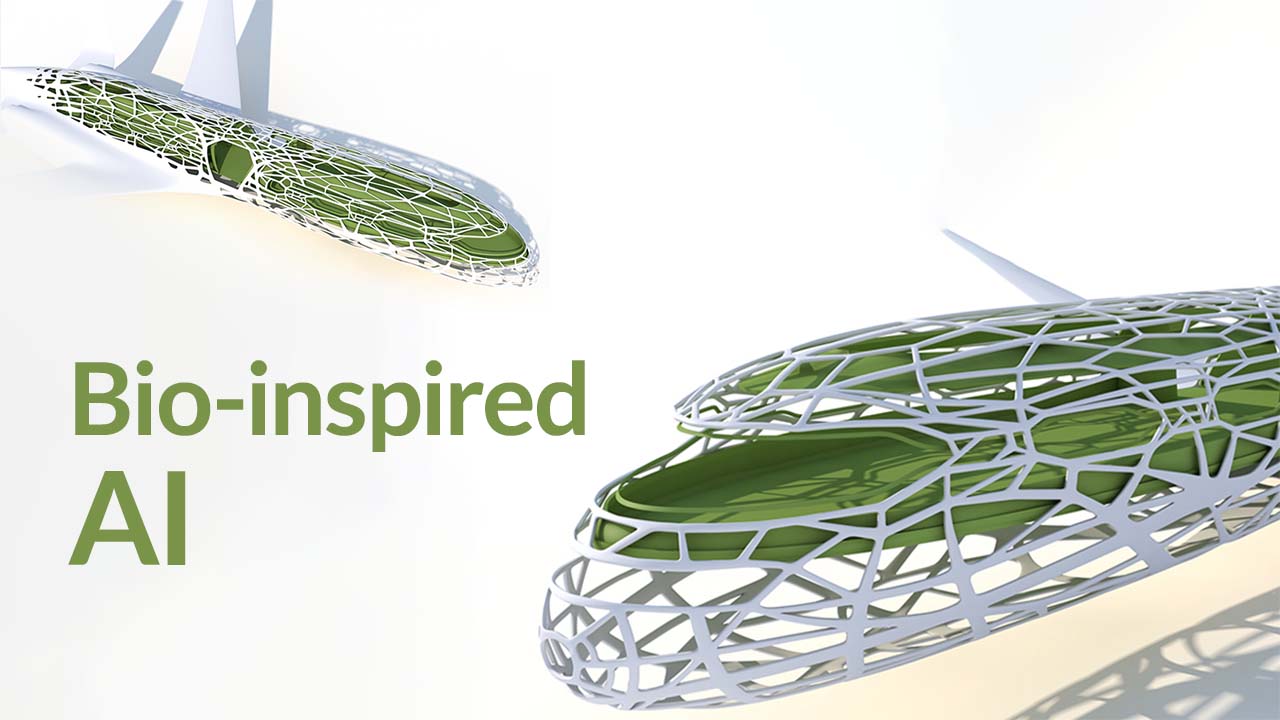
An example of Bio-inspired AI
The rest of this article ventures into the magical rabbit hole of Bio-inspired AI. Given this wide-ranging field, this article focuses primarily on the branch of Generative AI, and ultimately focuses on answering:
- What is Bio-inspired AI?
- What does Generative AI actually do?
- When Generative AI and Biomimicry overlap
- What does Generative AI mean for the future of work
- What biomimicry-related fields and professions are set to be impacted
- Share use cases and examples of Bio-inspired AI Generative AI and biomimicry
- Natural Intelligence, not just Artificial Intelligence
What is Bio-Inspired AI?
Bio-inspired AI is a field that combines biology and computer science to develop novel algorithms and computing techniques based on natural systems. As scientists continue to push the boundaries of artificial intelligence (AI), they are increasingly turning to the natural world for inspiration, learning from nature’s algorithms to create more efficient and intelligent systems. By studying how living organisms solve complex problems, scientists hope to create more efficient AI systems that can tackle a range of challenges, from optimizing logistics to redesigning aeroplanes. You can learn more about Bio-Inspired Computing here.
What does Generative AI actually do?
Generative AI generates new content.
Generative AI enables you to quickly* generate new content based on a variety of inputs. Inputs and outputs to these models can include text, images, sounds, animation, 3D models, or other types of data. *Quickly is really the whole point. We’re talking seconds to hours. While it is entirely possible for humans to accomplish many of the tasks that these models are used for, it would usually be infeasible based on how long it would take us to do so (days to years). These models are able to rapidly synthesise vast amounts of information and essentially leap-frog us to a point much further down the line.
A huge limiting factor in innovation is the time that it takes (us) to create something, and usually, the budget runs out before the ideas do, or before the best solution is arrived at. GenerativeAI allows us to cycle through huge numbers of ideas or options, all in a very short space of time, getting us closer to a more well-developed answer.
Tools include ChatGPT, DALL-E, GitHub Copilot, Midjourney, Bard, Descript, AutoCAD, Adobe Sensei … the list goes on (and on).
Bio-inspired AI: When Generative AI and Biomimicry overlap
It’s worth noting that Generative AI and biomimicry are pretty similar: Both fields draw inspiration from nature to generate novel solutions. Both rely on the amassed genius of the life that came before them. Both are distilling insights and synthesising new outputs. Generative AI has three sources of nature inspiration: neural networks, evolution, and unsupervised learning. When they overlap, they offer a powerful combination that harnesses the genius of nature and the computational capabilities of AI to drive nature-inspired innovations across various industries.
This is not to say that all Generative AI is biomimicry - as many applications lack the Ethos and Reconnect of biomimicry, but there are specific cases and genres that are in fact biomimicry. Here is a practical example of Generative Design that does well to illustrate the overlap between generative AI and biomimicry:
Bio-inspired AI Example: The bionic partition for the Airbus A320
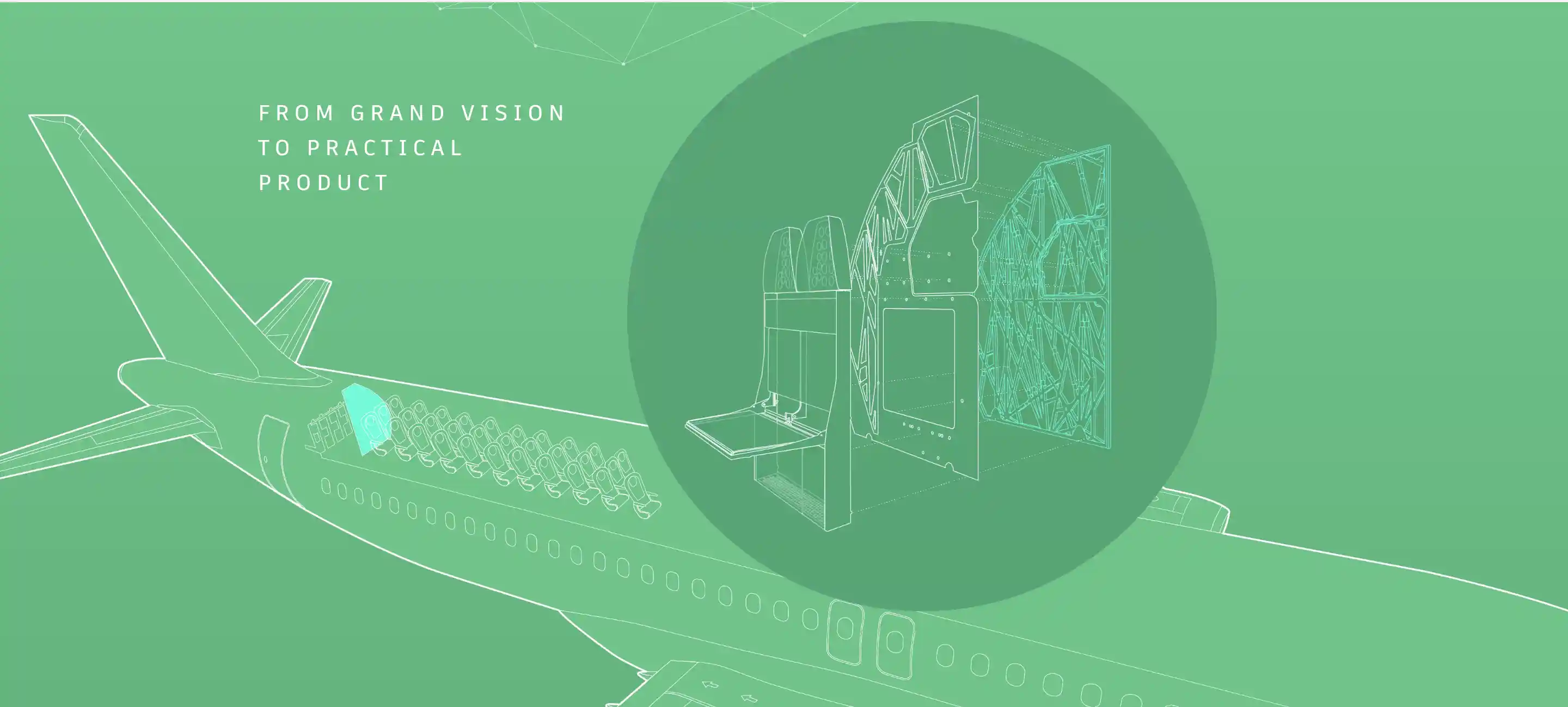 From grand vision for aviation to practical product. Image: Generative Design at Airbus - Autodesk
From grand vision for aviation to practical product. Image: Generative Design at Airbus - Autodesk
In a bid to find innovative ways of making jetliners more efficient and comfortable, Airbus has a BIG vision called the Airbus Concept Plane - a moonshot vision for the jetliner for 2050. The first small but actionable step forward was the bionic partition. The bionic partition is a pathfinder project, to foster the evolution of 3D printing in their manufacturing process, biomimicry and generative design.
I beg your partition? The partition is the part in the cabin that separates the passenger compartment from the galley.
Airbus’s bionic partitions needed to meet strict parameters for weight, stress, and displacement in the event of a crash. To find the best way to meet these design requirements and optimise the structural skeleton, the team programmed the generative design software with algorithms based on two growth patterns found in nature: slime mould and mammal bones.
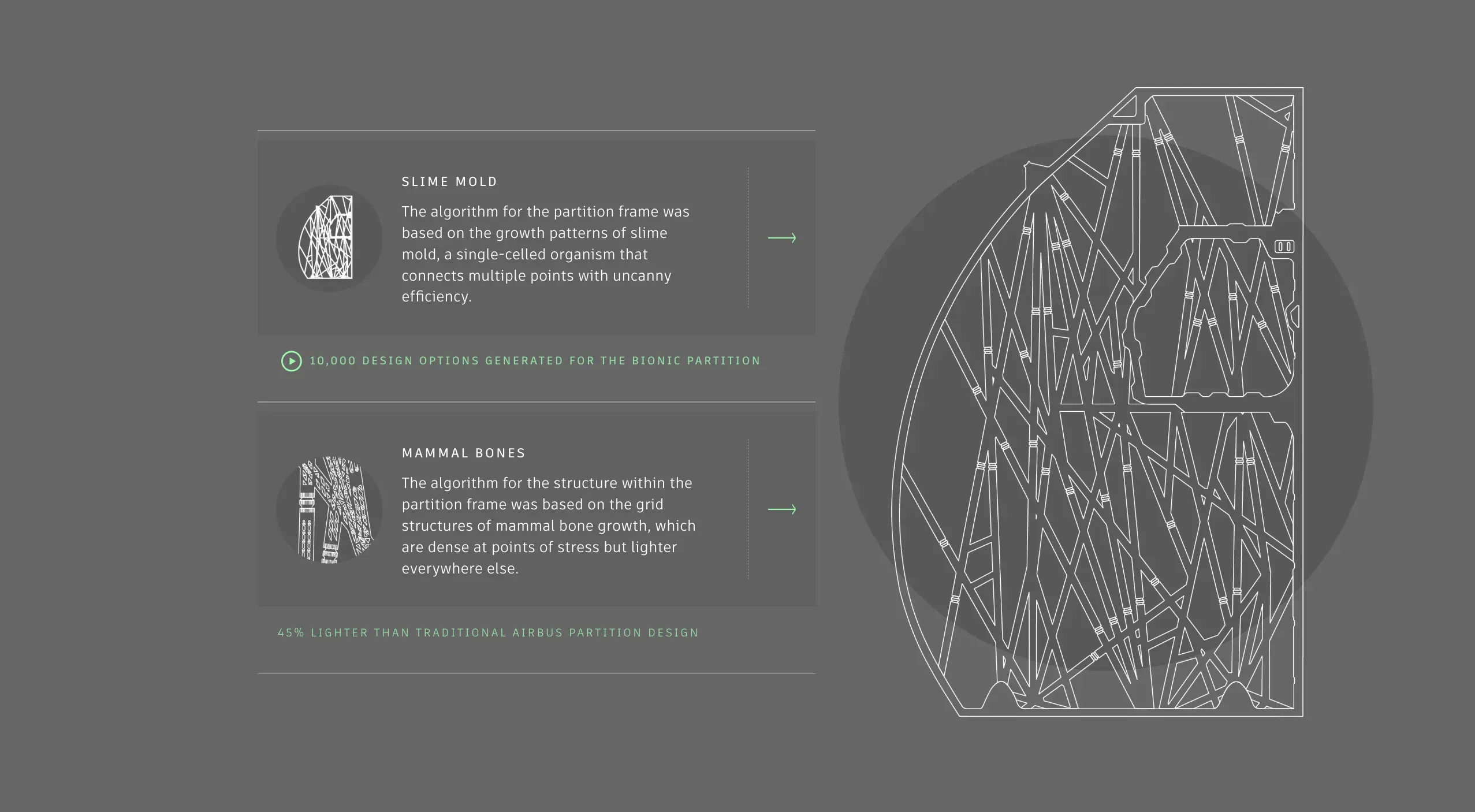
Bio-inspired AI. Image: Generative Design at Airbus - Autodesk
The resulting design is a latticed structure that looks random but is optimised to be strong, light, and use the least amount of material to build.
Why this bionic partition matters:
- For each 1 kilogram (2.2 pounds) reduction in weight, jet fuel use is cut by 106 kg (233.2 lb) per year, helping to decrease the carbon footprint of air travel.
- Each partition is approximately 30 kg (66 lb) lighter than the standard partition, which would collectively remove up to 500 kg (1,102 lb) of weight per aircraft.
- The resulting decrease in fuel use would cut CO2 emissions by up to 166 metric tons per aircraft. Each year!
Airbus’s success in applying generative design and 3D printing also highlights new company challenges: It will be critical to train the engineers to understand these new design and production methods – Airbus has only recently begun retraining its 10,000 engineers.
What does Generative AI mean for the future of work?
AI will not replace you. But a person using AI might.
Generative AI is a paradigm shift, specifically to the future of work, new job creation and the way in which we create. It’s perhaps a more equitable world, in that the professional bar to create content (image, design or video) has been dropped to the ground level. AI will not replace you, but a person using AI might.
“I’m a mechanical engineer with more than 30 years of experience, and I see here the biggest change I’ve ever seen. Every one of us has to understand a new way of working.”
- Peter Sander, from Airbus
Should we panic? No, we should not. Generative AI is (just) a new tool, in service of humanity. Don’t get me wrong, this tool is extraordinary. Extraordinary in the fact that it’s the first tool (in human history) which is able to create. Think about it - even today, most advanced tools do nothing without our explicit direction. The way we work will change more in the next 20 years than it has in the last 2,000 years. Whether we wished for it or not, this evolution is the dawn of a new age in human – and probably planetary – history.
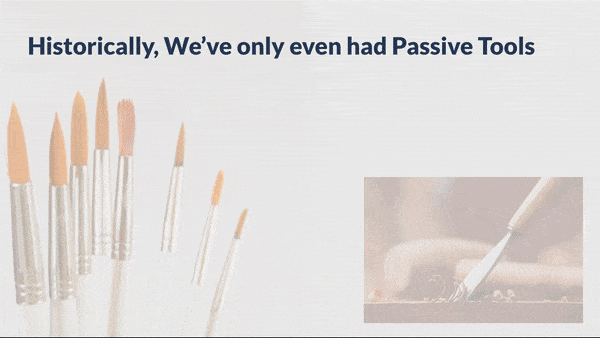
Moving from Passive Tools to Generative Tools
Generative AI is akin to the invention of photography, in that originally only painters could create realistic portraits or capture beautiful landscapes. Today anyone can generate an image with a camera, and now without.
The advent of generative AI can be likened to the invention of photography, a true creative revolution. With photography, we no longer needed to rely on the interpretation of an artist to capture reality, and with generative AI, we no longer need artistic talent to draw, design in three dimensions, or even sing. We can also easily generate text such as proposals, business plans or product descriptions. We can even design custom products like shoes or furniture.
Sound magical? As Arthur C. Clark said ‘any sufficiently advanced technology is simply indistinguishable from magic’
Which biomimicry-related fields are set to be impacted:
The field of natural sciences may greatly benefit from generative AI. In the healthcare industry, generative models can aid in medical research by developing new protein sequences to aid in drug discovery. Practitioners can also benefit from the automation of tasks such as scribing, medical coding, medical imaging, and genomic analysis.
The field of engineering has already begun to see some of the benefits. Generative can empower engineers to create novel design concepts, enhance the performance and efficiency of their designs and ultimately accelerate innovation.
The field of education is set to undergo a transformation with students likely to have personalised learning, intelligent digital tutors and content creation assistants - unique to their own learning style and interests. With students needing to learn these new skills, so too must our schools, universities and educators adapt. Generative AI should be embraced rather than shunned in the future of education. However, content and delivery only accounts for one aspect of learning. Teaching and learning social skills, cultural practices and interaction with the living world are still strictly the domain – and responsibility – of human beings.
These are just a few of the professional fields set to undergo a transformation.
Natural Intelligence, not just Artificial Intelligence
What we need is natural intelligence alongside artificial intelligence. What the ChatGPTs of the world lack is an integrated Ethos. It’s just a tool - and as with any tool - it can be used for both good and bad. Biomimicry offers a unique and timeless approach to how we should think, through using the Biomimicry Life’s Principles.
Rabbit hole: It’s time to reinvent the nature of innovation
Conventional wisdom for unconventional outcomes (and innovations)
ChatGPT is trained using a method called unsupervised learning. It provides typical or conventional answers by being exposed to a large amount of text data from diverse sources such as books, articles, websites, and more. That’s great, but when innovating, unconventional thinking is required to think outside the box. What excites me about this, is the overlap between biomimicry and Generative AI. Biomimicry is unconventional, AI is conventional wisdom. Biomimicry holds an ethos and hope, where AI is a (just) tool. Biomimicry can guide our thinking and questions, AI can help answer these questions.
Closing thoughts
The era of Artificial Intelligence is here. As we strive to create a more harmonious relationship between humans and the natural world, we find ourselves at a crossroads with Artificial Intelligence, humanity and the natural world. Many have touted AI to be a saviour (Why AI Will Save the World - Marc Andreessen), but hey - not so fast, Marc. If we are to 'save the world', we need to better understand the problem - and the problem is a systemic problem. No one wants traffic, poverty, biodiversity loss or Climate Change - but the problems remain. Solving systemic problems requires an interdisciplinary approach. Good solutions to important problems – whether that is in industry or larger societal problems – are rarely found within a single
discipline or tool. Instead, solving complex, real-life problems generally requires bringing together insights from multiple disciplines, tools and a number of approaches.
The question remains - can artificial intelligence (AI) create conditions conducive to life? This question will be answered in the decades to come, but for now, I believe the preferred answer is that, with biomimicry, we can.
Enjoyed reading this article? Share this article on Twitter
